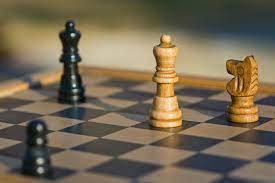Introducing the Inaugural FIDE Chess Tournament in Uttarakhand
Chess enthusiasts and players from all around the country are eagerly anticipating the 1st Late Shri Dhiraj Singh Raghuvanshi Memorial Fide Rating Open Chess Tournament 2023, which is scheduled to take place in Rudrapur, Uttarakhand. This prestigious event will be held from May 22 to May 27, 2023, at DPS Rudrapur. With a total cash prize fund of Rs. 11 lakh, this tournament promises to be an enthralling experience for participants and spectators alike. Venue and Location: The tournament will be hosted at DPS Rudrapur, located opposite Gate No.11, Radha Swamy Satsang, Kicnna Road, Rudrapur, Uttarakhand. The venue offers excellent facilities and a conducive environment for players to showcase their skills and compete at the highest level. Tournament Highlights: Fide Rating Open Chess: The tournament follows FIDE regulations, ensuring a high standard of competition. Players will have the opportunity to earn FIDE ratings based on their performance. Cash Prize Fund: The total ca...


